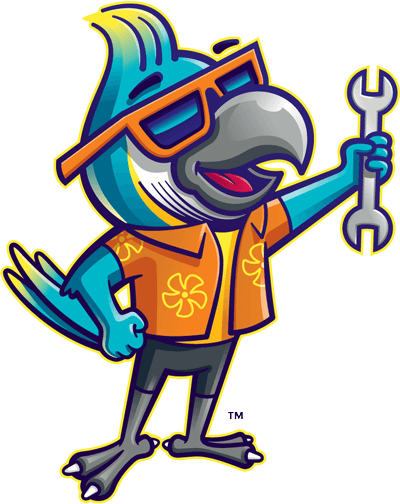Licensed, Knowledgeable, and Equipped for a Heat Pump Installation Near You!
Heat pumps are an optimal alternative system providing more efficiency than electric or gas furnaces and air conditioners. Whether you’re considering replacing your old unit or introducing one to your home for the first time, let the professionals at TropiCool conduct your heat pump installation safely and effectively.
Our qualified team has over 250 five-star reviews, making us the #1 installers in Westerville, OH, and surrounding areas. Contact us to learn more about your options and the process beforehand.
Why Consider a Heat Pump
Unlike furnaces and air conditioners that suck in surrounding air through the vents and heat or cool it, heat pumps redistribute warm air. During the summer, it pulls in air and separates the existing warm and cool air, sending the warm air outdoors and the cool air inside. A reversing valve allows the indoor unit to switch flow during the winter, releasing warm air indoors.
According to the US Department of Energy, this process allows an efficient heat pump to run using up to 50% less electricity than a typical HVAC unit, resulting in lower utility bills. You’ll also produce a smaller carbon footprint, especially if moving from non-renewable fuels like oil, gas, or coal. Like HVAC units, they’re suitable for all climates, making them widely accessible.
When You Need a Replacement
If you already had a heat pump installation, you need a replacement rather than a first installation. Like furnaces and air conditioners, heat pumps easily last 10 to 15 years with annual maintenance. When the lifespan nears its end, you’ll notice more frequent and costly repairs from a slowly deteriorating unit, making a replacement ideal.
Improper care leads to premature breakdowns. When your heat pump comes to the end of its life, you’ll notice the following signs you need a replacement soon:
- Unusual sounds, including constant clicking from the thermostat and unceasing grinding or squealing from the blower motor or fan belt
- Warm air flowing during the summer, and cool air entering during the winter, despite changing the reversing valve or checking the thermostat settings
- Cold air following a heating cycle, meaning the system isn’t redistributing cool air outdoors
- Low heating or cooling power
- An incorrectly sized unit needing replacing
- Unusually high energy bills
Types of Heat Pumps
Before a technician conducts a heat pump installation, they’ll explain the types of heat pumps available. Air-to-air heat pumps are the most common forms that move warm air into or out of your home. They take up little space and are the easiest to install and maintain since the unit sits above ground.
Geothermal heat pumps source heat from the ground, which is best in colder climates that regularly see below-freezing temperatures. That’s because the soil is warmer than the surrounding air. Fluids run through the underground looped pipes, heating as it passes through the soil and bringing that warmth to the pump for redistribution in your home.
If you live near substantial bodies of water, a water-sourced pump runs pipes from the water to your system to heat or cool your home. This source keeps temperatures the unit takes in more consistent than air-sourced pumps, proving more efficient during hot summers and freezing winters. It’s also cheaper than an underground unit.
Heat Pump Installers Near Me
If you’re unsure of the type of heat pump installation that would best benefit your home, contact us, your go-to “heat pump installers near me.” Our team has over 250 five-star reviews, and we aim for 100% customer satisfaction with every service we provide. Call TropiCool at 614-739-8670 today for energy-efficient household heating and cooling in Westerville, OH!
FAQs About Heat Pump Installations
When considering a heat pump installation, you probably have multiple questions that could affect your decision. Below are some common FAQs we receive.
The heat pump installation costs range between $6,700 and $10,000, depending on your heat pump type, size, and model. Air-to-air units prove more cost-effective, while geothermal units are the most expensive to install. However, geothermal units are more energy efficient in colder climates.
After mounting the brackets for the indoor and outdoor units and drilling a hole in your wall to connect electrical wiring, technicians will install drainage lines and tubes to rid the system of moisture. Then, they’ll install the indoor and outdoor units before cleaning up, with the process taking approximately one day to complete.

